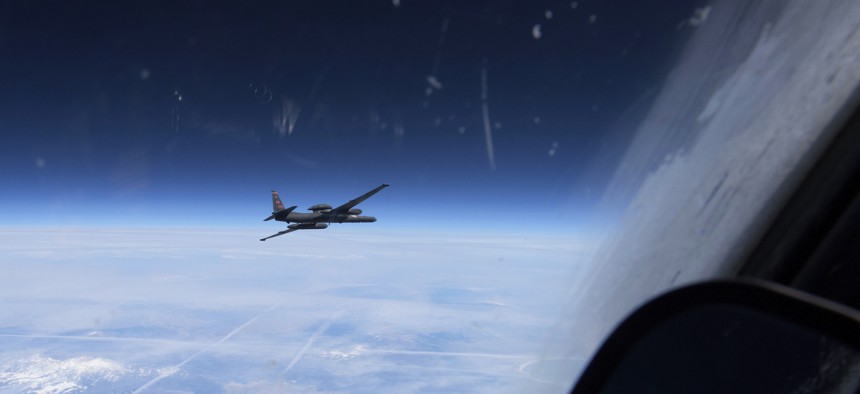
A U-2 Dragon Lady flies above the Sierra Nevada Mountain Range, California, Mar. 23, 2016. U.S. Air Force photo/Staff Sgt. Robert M. Trujillo
The Air Force Used AI to Operate the Radar on a U-2 Spy Plane
Officials tout ARTUµ algorithm as a step toward a “new era of warfare.”
The U-2, one of the most enduring denizens of the U.S. Air Force menagerie, tested one of the newest capabilities on Tuesday: a robotic radar operator.
First flown some 65 years ago, there is essentially nothing that can replace the unique capabilities of the “Dragon Lady.” It flies long missions at 70,000 feet, well above what commercial aircraft fly, high enough to give the sensors, cameras, and digital radar a wider view of the earth than would be possible at lower altitudes but still allow it to collect data unavailable to satellites. Crewing the U-2 is hard, requiring airmen to wear special pressurized “moon suits” that look like they were designed by an illustrator of 1960’s sci-fi book covers. The Air Force on Tuesday announced it had deployed an AI algorithm on a test flight to essentially serve as a radar operator on the aircraft, a step forward in potentially lessening burdens on U-2 crew members.
During the Tuesday test, the ARTUµ algorithm handled sensor employment and tactical navigation normally done by the pilot. The scenario was a reconnaissance mission during a simulated missile strike.
“ARTUµ’s primary responsibility was finding enemy launchers while the pilot was on the lookout for threatening aircraft, both sharing the U-2’s radar,” said the Air Force in a statement. “The pilot and AI successfully teamed to share the sensor and achieve the mission objectives.”
Its developers trained ARTUµ on more than 500,000 simulations, they said.
“Like any pilot, Artuμ (even the real R2-D2) has strengths and weaknesses. Understanding them to prep both humans and AI for a new era of algorithmic warfare is our next imperative step. We either become sci-fi or become history,” Will Roper, the Air Force’s assistant secretary for acquisition, said on Twitter.
The test, which occurred Tuesday at Beale Air Force Base in California,extends the potential lifespan for the program, which has survived multiple attempts to kill it. In 2015, U-2 maker Lockheed Martin said stress tests on the airframe show it could fly through 2050.
NEXT STORY: National Guard Helping to Roll Out COVID Vaccine





